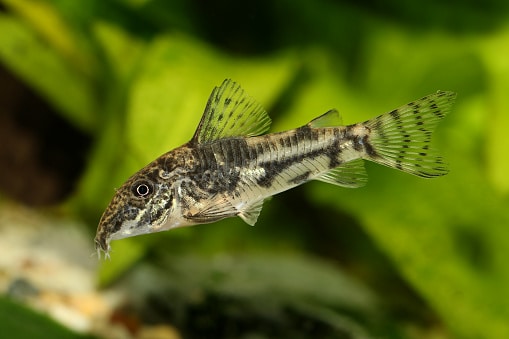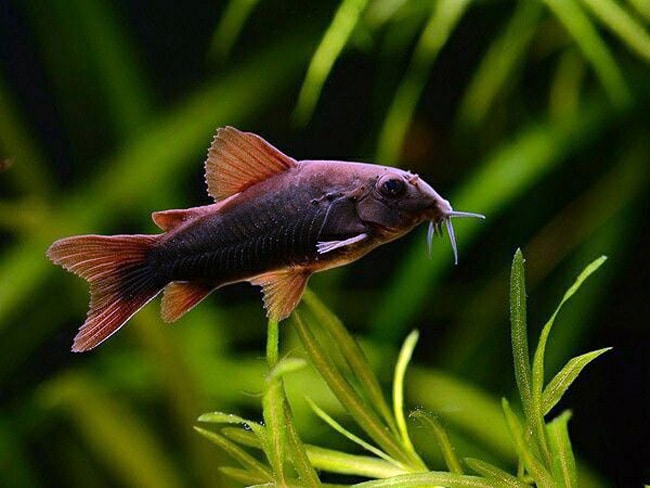Scavenger fish are species in the family Callichthyidae of the order Siluriformes. It is reported that there are 161 species belonging to the family Callichthyidae. 130 of these 161 species consist of Corydoras scavenger fish species and variations of this species. Corydoras therefore constitutes the largest group of the family.
Distribution of Species
In their natural environment, Corydoras species are reported to be found in a wide variety of rivers in South America and mostly in shallow waters with soft ground, in tributaries of the Amazon River. Corydoras, Brochis and Aspidoras species live in smaller streams and rivers, stagnant waters, ponds and marshy environments.
How to Feed Scavenger Fish?
Corydoras and their relatives are omnivores. They usually feed on the bottom, but can learn to come to the surface for food when hungry. In its natural environment, scavenger fish feed on worms, small crustaceans, insects and plant foods. In the aquarium, you can feed it with a variety of high-quality food for best results. You need to change the diet of your fish regularly. Feed once or twice a day with only as much food as your fish can consume in 2 to 3 minutes.
How Should a Scavenger Fish Aquarium Be?
The size of the most suitable aquarium in which scavenger fish will be fed should be 1/8 m2. The pH value of the aquarium water should be between 6.5 – 7.5. The temperature of the aquarium should be between 22 – 26°C. In the aquarium, it should be 18×12×12 cm2 (1 female, 2 males) for the continuation of the generation.
A 30-gallon aquarium is best for most species, but dwarf Corys such as C.hastatus, C. habrosus, and C. pygmaeus can be kept in smaller aquariums. Since these fish like to gather in groups, open areas should be found near the front of the tank. They should also be provided with some cover for their refuge. The substrate should be sand or fine gravel with rounded edges. While walking along the bottom, it is necessary to avoid rough materials that can damage their mustache.
Are Scavenger Fish Compatible With Their Own Species?
Corydoras, Brochis, and Aspidoras species are pack fish, meaning they like to hang out together. Different species can be mixed and are often grouped together. Should be purchased in batches of 5 or more for best results. These catfish sometimes leap to the surface to swallow air. This behavior is normal. However, persistent breathing at the surface can be an indication of water quality problems or low oxygen content. Unlike many catfish, which can be nocturnal and secretive, Corys and their relatives tend to be outside during the day. They can be kept with the most peaceful community fish. Different species reach varying sizes as adults, so species selection should be based on tank size and the types of fish you keep. Always consult an aquarist before purchasing a new fish for your aquarium.
Source: one
















